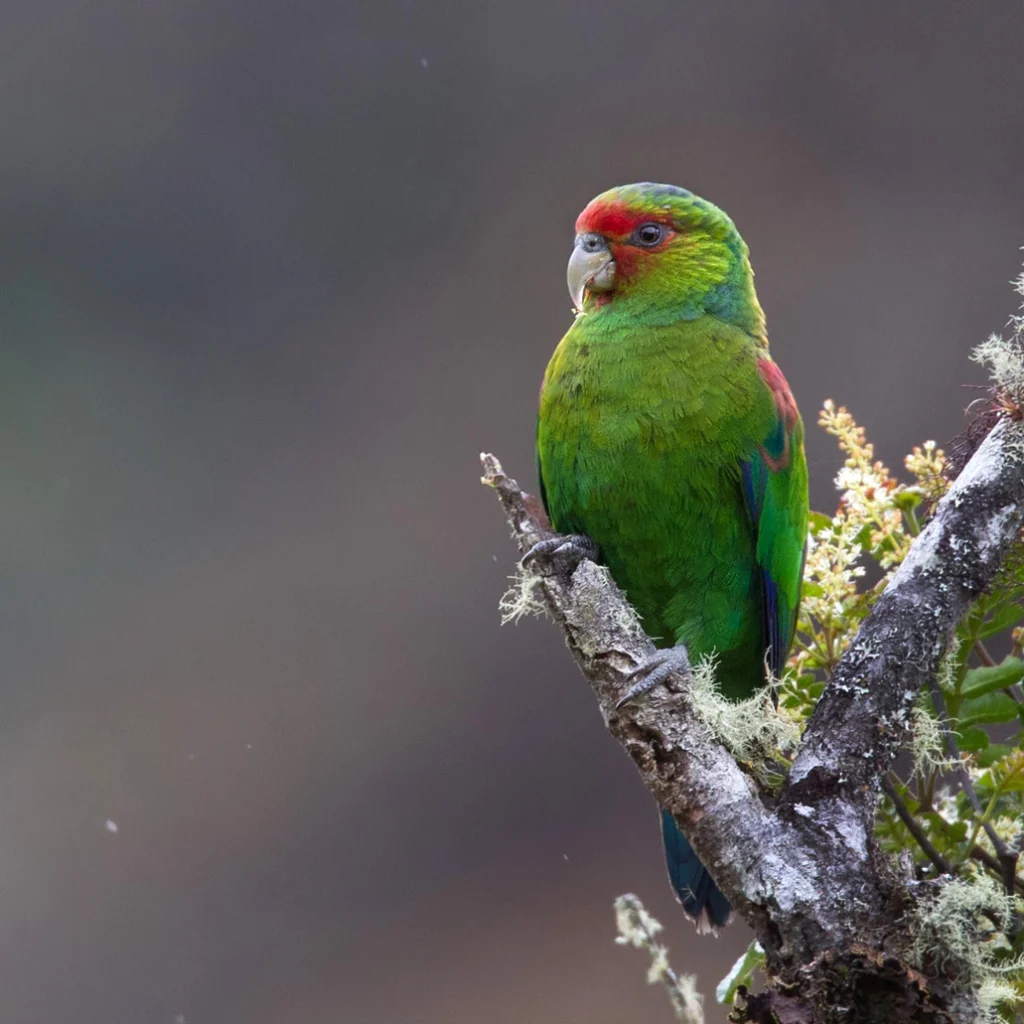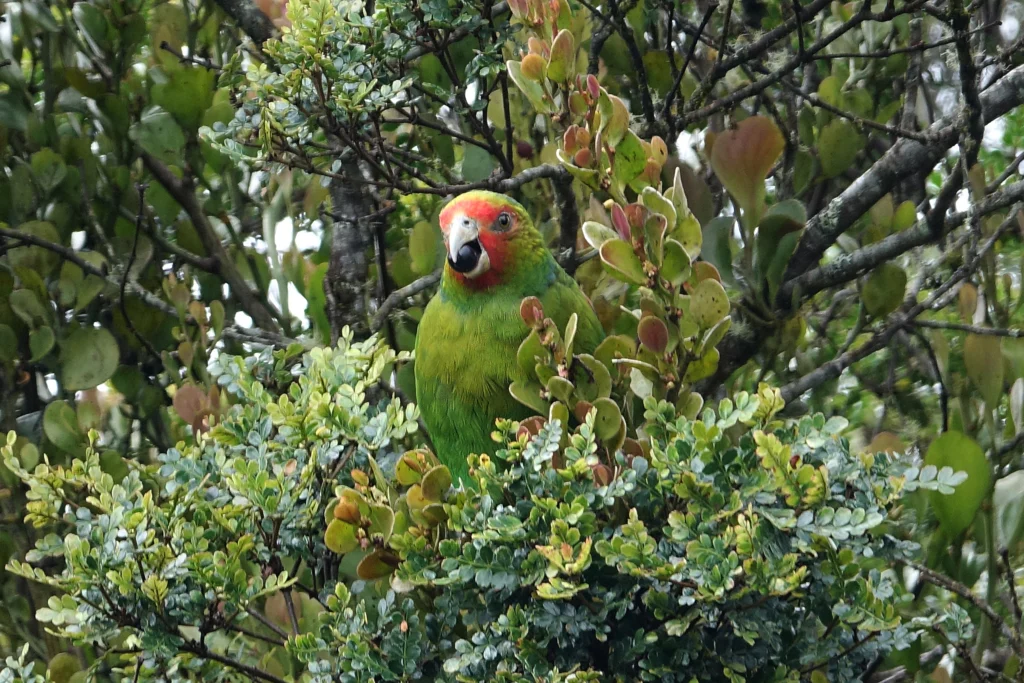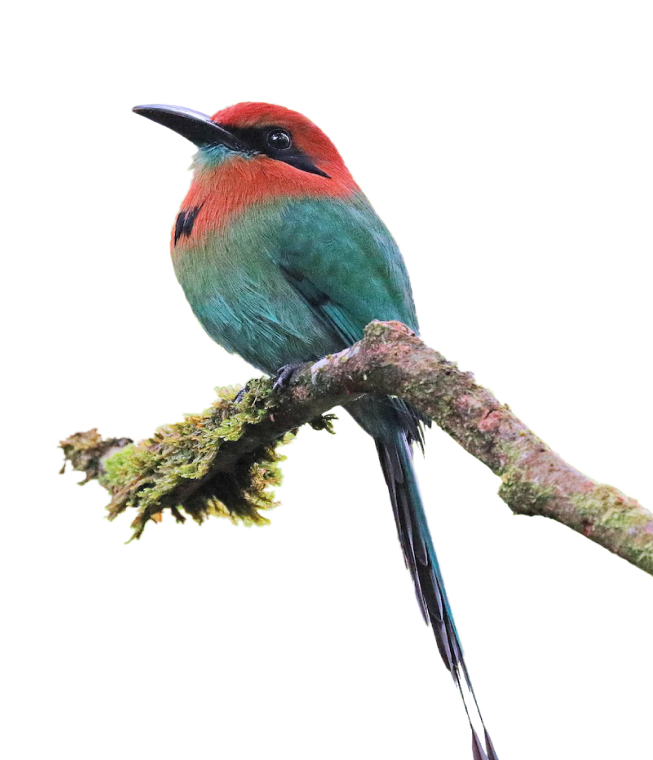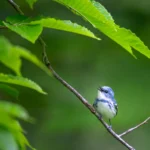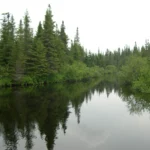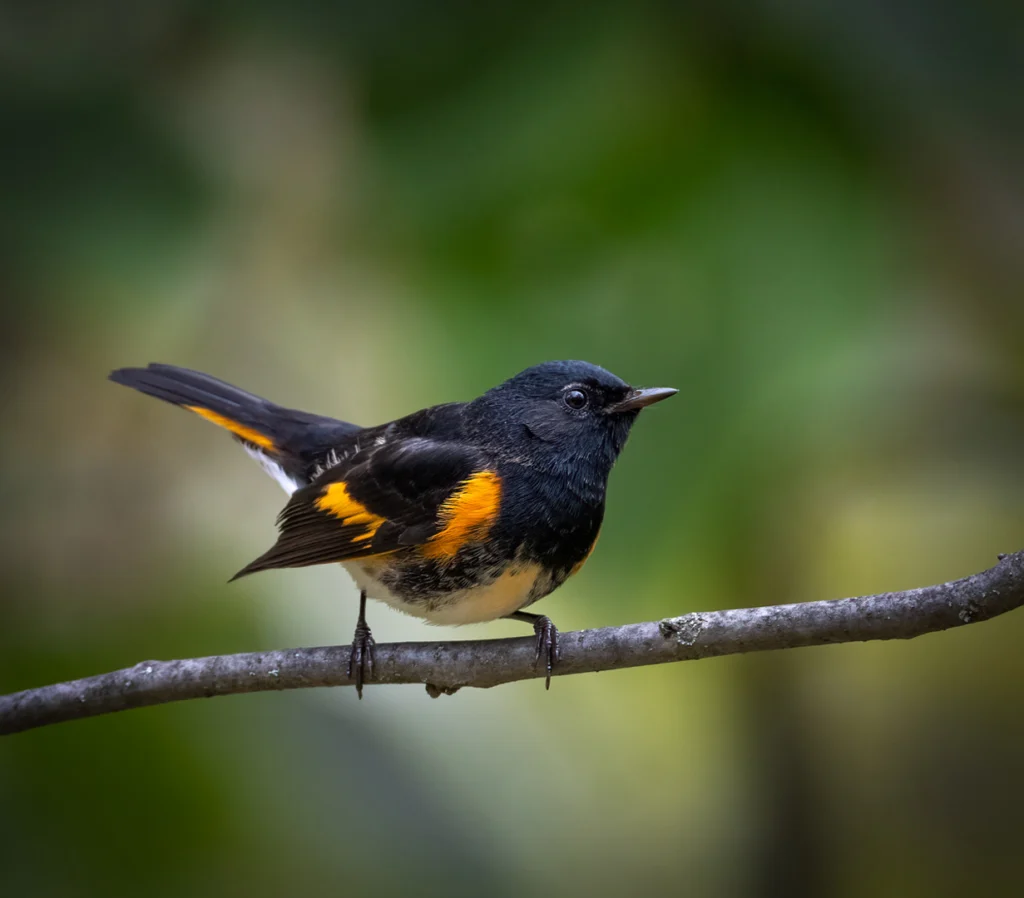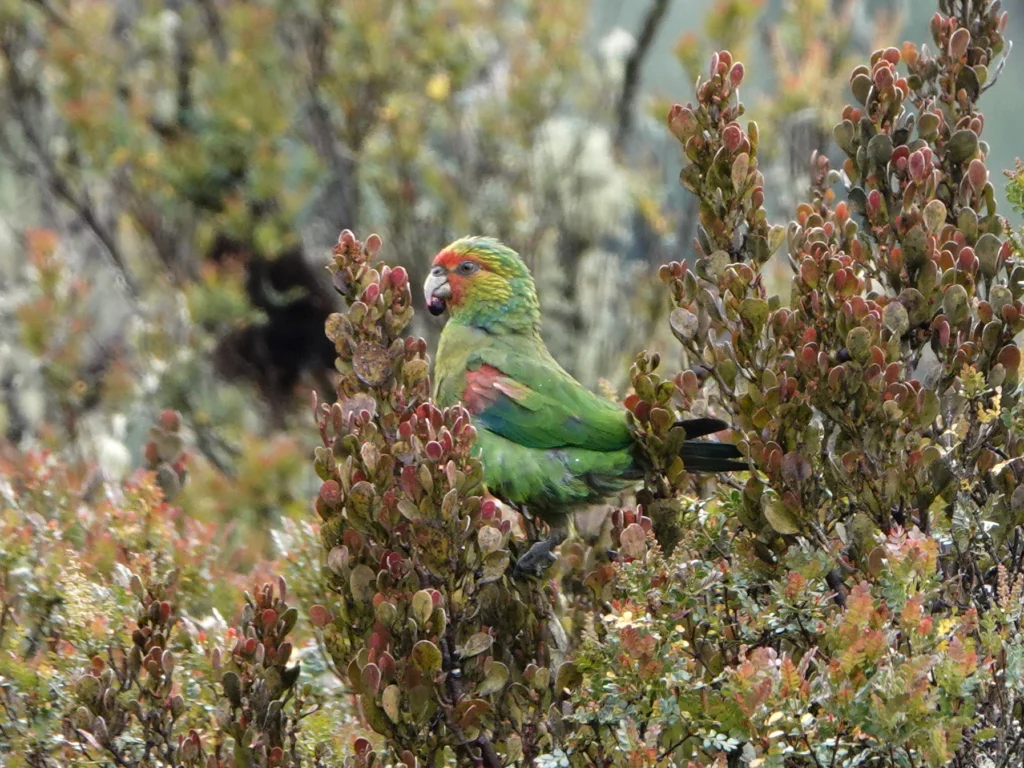
Overview
About
A resident of a tiny corner of the cloud forests of Ecuador and Peru, the Red-faced Parrot is a colorful conglomeration of colors. The Red-faced Parrot may actually be part of a single species that includes other parrots found along the eastern Andean Mountain range: the Indigo-winged (Fuertes’s) Parrot of Colombia and the Rusty-faced Parrot, found further north in Colombia and into Venezuela. No species in this genus boasts a large population, and the Red-faced Parrot is no exception. With a restricted range and a population numbering no more than 2,400 individuals, the Red-faced Parrot is Endangered.
Threats
Birds with small populations and restricted ranges are often among the most vulnerable species. The Red-faced Parrot occupies just a sliver of the eastern Andes, in cloud forest habitat that has experienced significant degradation and fragmentation. It was recently uplisted by the IUCN from Least Concern to Endangered on the Red List of Threatened Species.
Habitat Loss
The Red-faced Parrot is found in the montane cloud forests of southern Ecuador and northern Peru, an area that has seen extensive deforestation in recent decades. Logging, clearing for agriculture, infrastructure development, and mining have put pressure on biodiversity in the region. Climate change impacts deepen the threat of habitat loss.
Conservation Strategies & Projects
ABC takes bold action to ensure a future for birds like the Red-faced Parrot. Conserving habitat is critical. Working with our partners and local communities, we have helped to protect more than 1.1 million acres of land in more than 100 reserves across 15 countries. Three thousand bird species — nearly one-third of the world’s bird species — have benefited from this work.
Creating & Maintaining Reserves
ABC has a long history of partnering to conserve habitat for some of the rarest species in the world. The Ecuador Ridgley Reserve in Selva Alegre, established in 2025 as part of the Conserva Aves initiative, improves habitat connectivity and provides environmental benefits to local communities.
Bird Gallery
The Red-faced Parrot is small in comparison to most other parrots. It is green overall, with red plumage on the forehead, cheeks, and “eyebrow” that gives it its name. Its ear coverts — the small feathers behind the eye covering the ear opening — are streaked with yellow. Its wings are topped with red shoulder patches, and the primaries (the bottom part of the wing when folded) and the tail feathers are dark blue.

Bird Sounds
This species utters a variety of loud, screechy, two-syllable calls while perched or feeding. Its flight calls include a more mellow-sounding “currrt.”
Credit: Paul Molina Abril, XC671953. Accessible at www.xeno-canto.org/671953.
Credit: Niels Krabbe, XC238353. Accessible at www.xeno-canto.org/238353.
Habitat
The Red-faced Parrot is found in the cool, high-humidity cloud forests of the Andes, at elevations between 8,200 and 11,400 feet.
- Found in very wet upper montane cloud forests
- Also uses forest patches and shrubby areas adjacent to páramo grasslands
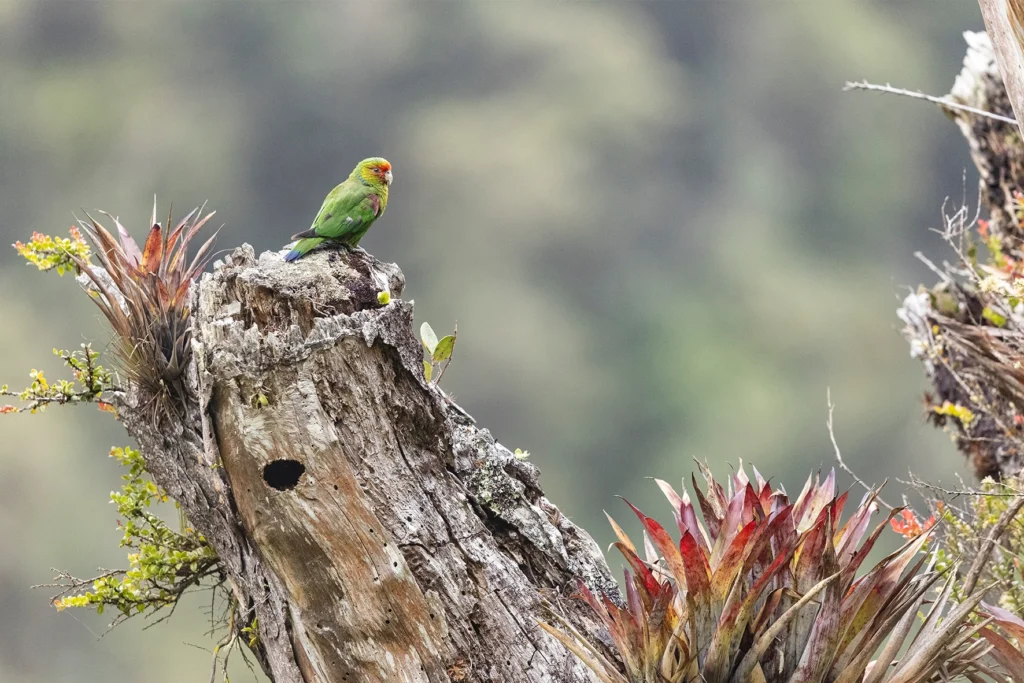
Range & Region
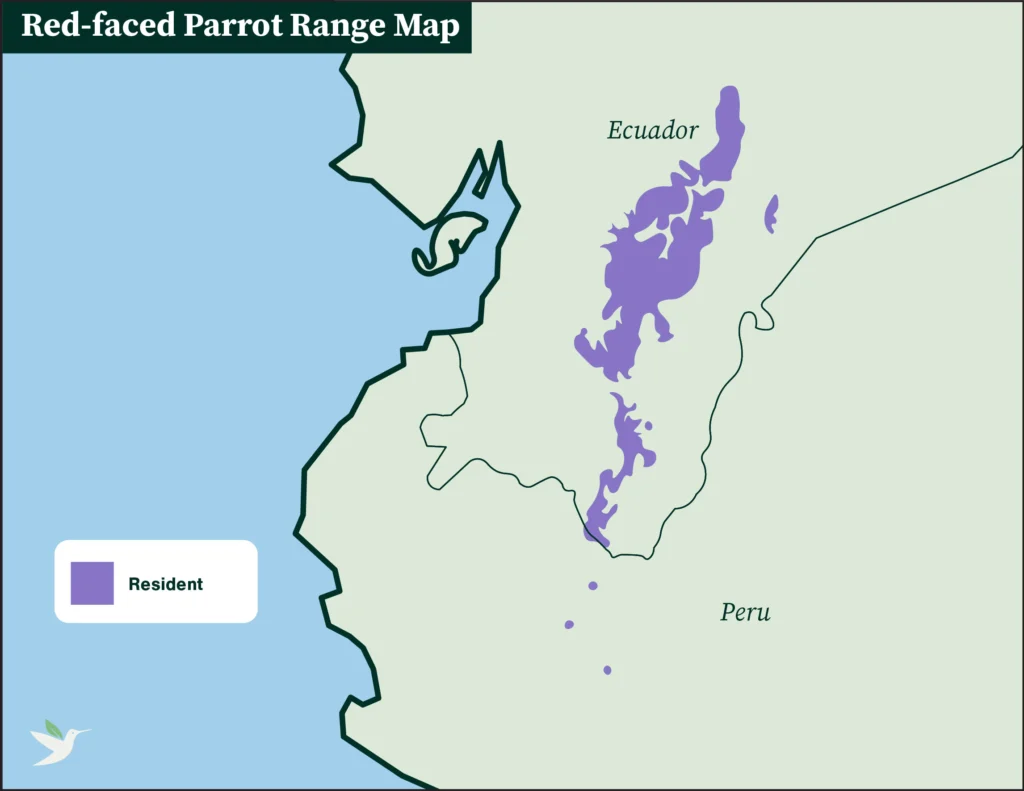
Specific Area
Southern Ecuador and northwestern Peru
Range Detail
An extremely range-restricted species, the Red-faced Parrot is found on the eastern slope of the Andes in southwest Ecuador to extreme northwestern Peru.
Did you know?
Though this species is nonmigratory, it may move altitudinally seasonally or in irregular displacements.
Life History
Often observed in pairs or small flocks, Red-faced Parrots tend to fly above the forest and then disperse into the canopy, where they easily blend in as they forage within the foliage. They often give their loud, screechy calls while foraging.

Diet
The Red-faced Parrot forages in the canopy or lower down in small fruiting trees, and even in shrubs. It combs the branches of trees and shrubs for fruit, blossoms, and seeds. It also takes berries, pods, and plant shoots.
Courtship
Little is known about the courtship and mating of the Red-faced Parrot. Many aspects of the life history of this rare species remain undescribed.
Nesting
Like other parrots, the Red-faced Parrot is a secondary cavity nester, making its home in a naturally occurring tree cavity or one excavated by another species, such as a woodpecker.
Eggs & Young
The female Red-faced Parrot lays a clutch of two to three eggs, which she broods herself. Her mate pitches in to help feed and care for the chicks once they hatch.

